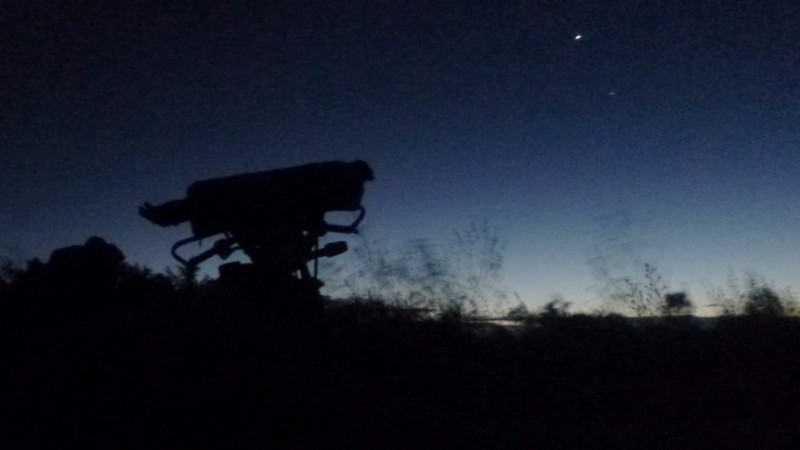
ROADSIDE CAMPS AREN’T often the best, but this one turned out to be perfect. A clear night sky, the breeze whispering through the eucalyptus leaves and fireflies dancing in the wooded darkness below. The dormant Ruta 14 ignored by the distant traffic on the coast road on the horizon to the east promised tranquillity. Only two vehicles passed during the night, me nestling invisibly behind the undergrowth on the verge.
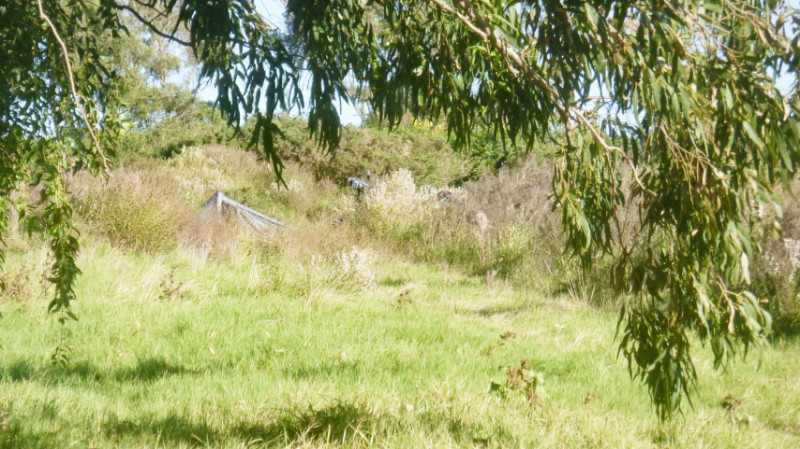
The Sun climbed out of the east and tamed the cool air migrating inland from the nearby Atlantic coast. Pitched conspicuously on the roadside without the cover of darkness doesn’t feel appealing, so I started packing as soon as I awoke.
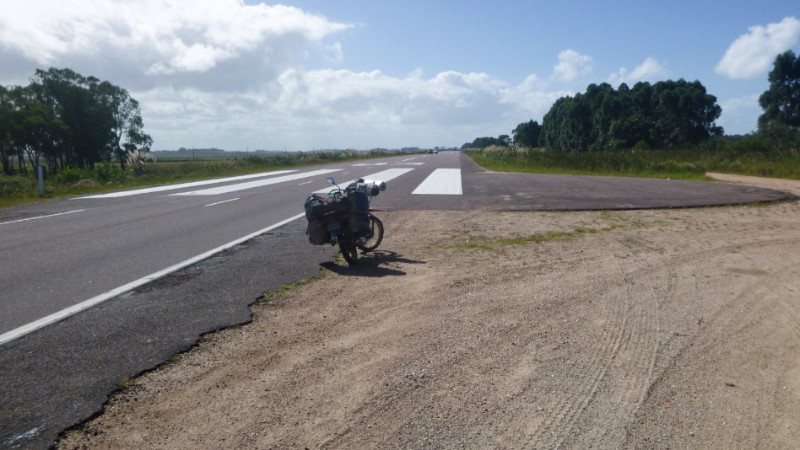
A short 3km ride brought me to the asphalt of Ruta 9, which seems to double as a landing strip along a certain stretch. Instead of turning south, hunger directed me north to nearby La Coronilla in search of breakfast.
Tuesday 16th April. Turning right in La Coronilla, coasting over the speed humps to the beach revealed a village locked up and still asleep. We were now in the off-season but I discovered a small bakery with a bench in the sun where I could sit and eat pastries washed down with cafe con leche bathing in the bright morning warmth.

Still early, I needed WiFi for a heads up on my new mission along the coast. Quaint La Coronilla offered no substitute to distract me from retreating to the Ancap fuel station back at the junction with Ruta 9.
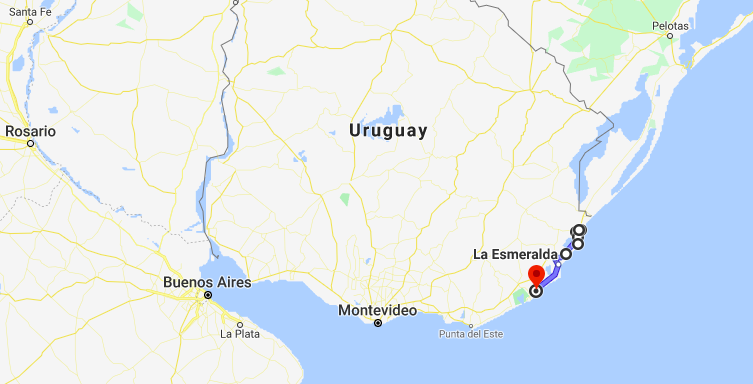
Adjoining the fuel station sits a modern-looking prefabricated cafe, glass-fronted resembling an office you sometimes find at new housing developments in the UK. I skipped refueling as I still had a third of a tank. The east-facing windows allowed the sun to stream inside and provide a sultry warmth to the morning. I took a seat next to a mains outlet and obtained the wifi code together with a few more pastries and coffee.
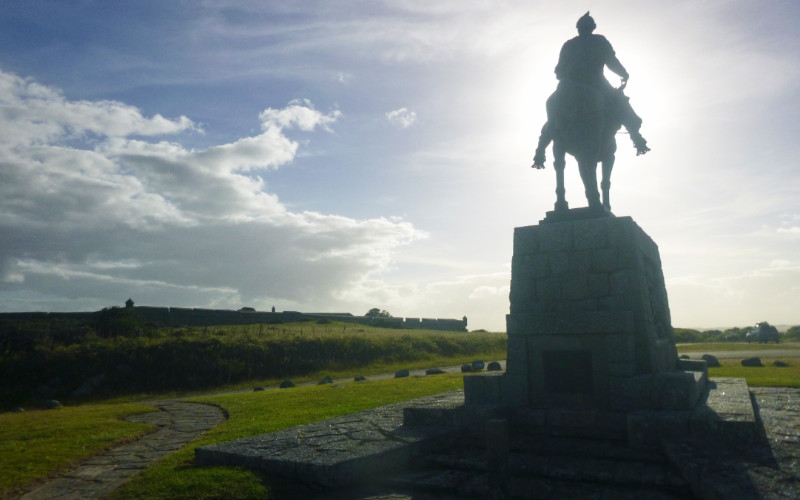
Fortaleza Santa Teresa sits on the coast just 10km south. I had all day to get there so I remained at the cafe enjoying the sun’s warmth while the shadows shortened towards noon.
The smooth fast Ruta 9 follows the coast from the Brazil border at Chuy to the capital of Montevideo so it is a more lively route than I’ve recently been used to. Fast traffic overtakes me at my top speed of 80kmh. I watch my mirrors almost as much as looking ahead. No less stressful than riding along gravel.
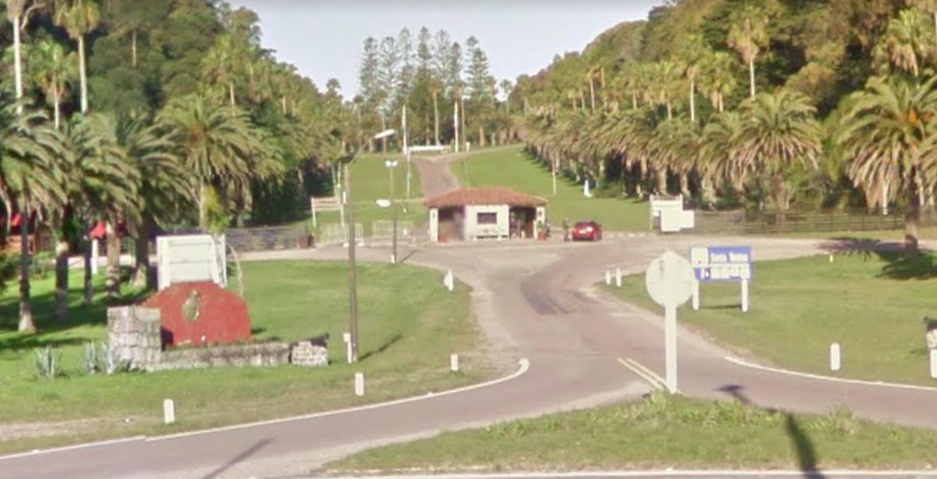
Fortaleza Santa Teresa is a National Park operated by the military. From the gatehouse I was directed to a separate ticket office, a large shed set about 100 metres left of the entrance. Returning to the gatehouse with my ticket and map, I submit the piece of paper and set about exploring the park. It’s a family holiday park really, many of the stores and vendors now closed until next season. A few campers and families remain, scattered throughout the site. A nice enough place but not my cup of tea, what with having no family.
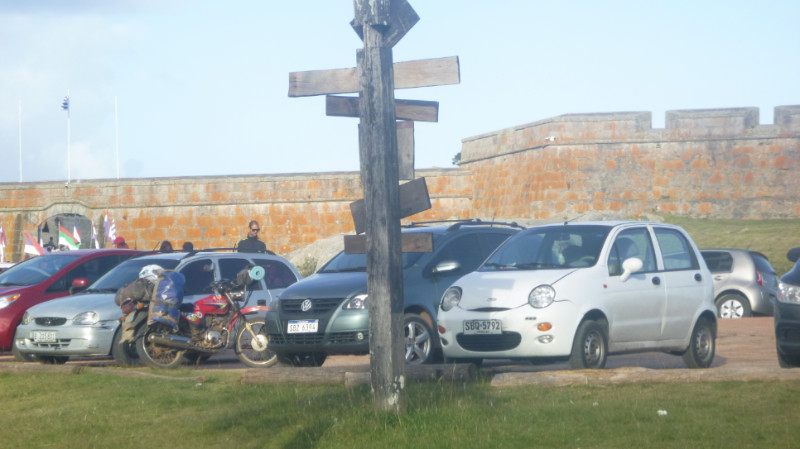
The fort itself is an impressive attraction that lies outside the park boundary, packed with visitors, I meandered around the interior looking at the photographs explained with foreign text. I got a feel for the place if not the history. I treated myself to a late afternoon lunch at the fort’s cafe adjoining the car park, paying tourist prices since nothing seemed open inside the park.
Choosing my moment carefully I started back to the park and into a torrential thunder shower beating me back to the cafe for shelter and enjoy another beer while watching the storm pass.
The guard on the gate waved me through so I didn’t have to stop and retrieve my soggy ticket out of my pocket. I scanned through the scattered campers to pitch in a vacant area in some pine woods. Water points confirming a permitted area but nobody else here so it almost felt like wild camping. A restful night within earshot of the Atlantic surf crashing on the beach.
After striking camp mid-morning, the following day felt empty and purposeless. I filled the time by cruising around getting my money’s worth out of the entrance fee to the park. I discovered a restaurant near the Playa La Moza that was open and enjoyed coffee and pastries for breakfast.
I came across a camping site next to the northern entrance that had power sockets. I strung up the hammock only for the afternoon as I didn’t want to pay for another night. There was no WiFi so i updated my journal while charging the laptop and camera. Punta del Diablo lay only 10km south, so I planned to find a wild camp spot between here and there.
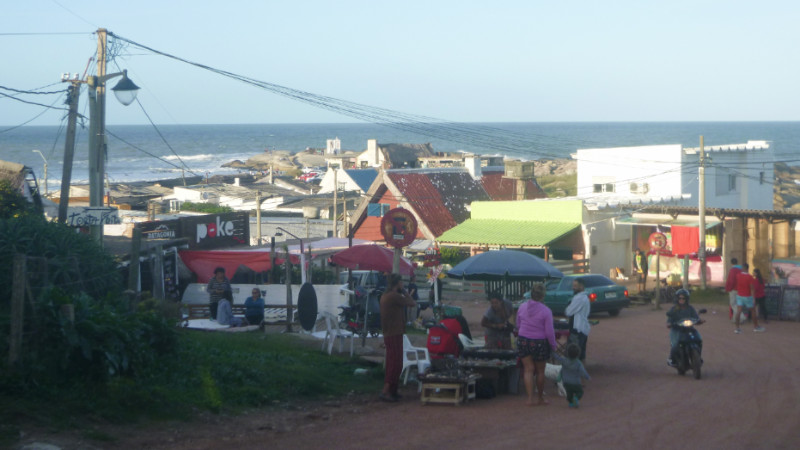
I set off late afternoon for Punta del Diablo, a characterful fishing village, rich with souvenir shops and tourism, bustling with visitors even now in low season. Exploring the sandy streets of Punta del Diablo for wild camp spots drew a blank adding to the disappointment of not finding any candidates along Ruta 9. Seafront fish, chips, and beer soothed the pain.
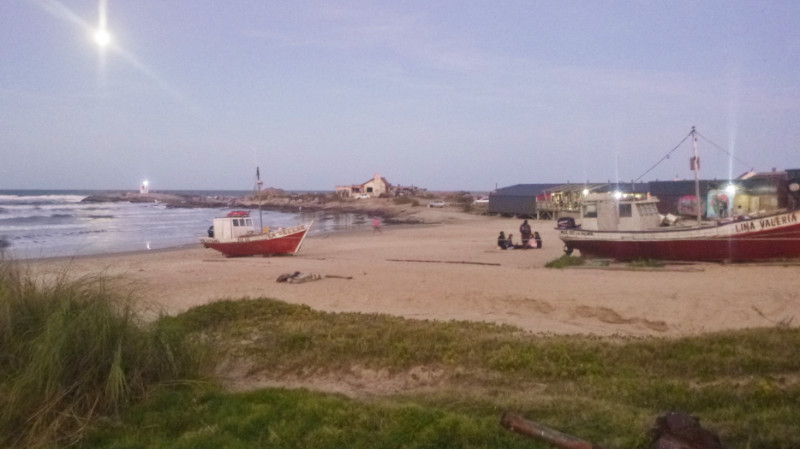
As nice as Punta del Diablo is, it is a tourist trap incompatible with wild camping and I decided to backtrack to Fortaleza de Santa Teresa to a quiet lane I’d noticed near the junction and parallel to Ruta 9. In the dark, I lost my way back to the main road and ended up in the rural outskirts of Punta del Diablo on a network of sand tracks. I stopped to ask a local:

“Donde esta ruta nueve, por favor?”
“No entiendo.” came the reply and I repeated my question.
“No entiendo.”
“Necisito salir.” I added
“Ah! R-r-r-uta nueve!” making that machine gun “r” sound that the Spanish language has. It sounds the same to me with a normal “r,” I thought, as he pointed out the directions.
Pitching the tent by head torch, trees shielding my position to the traffic and the muffling the tire noise from the busy road helped provide a cheap and fairly restful night.
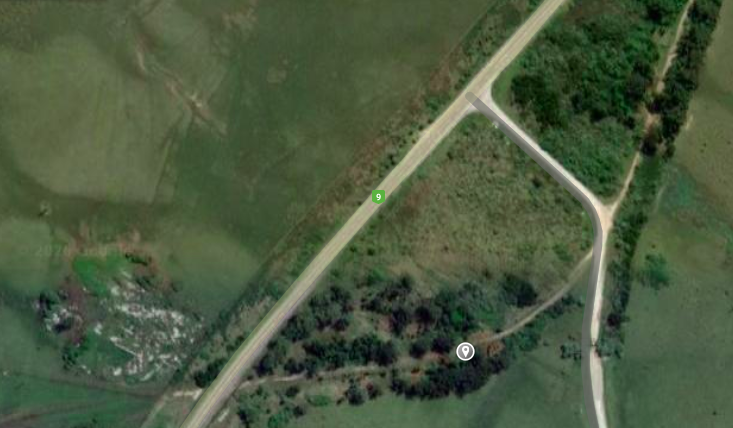
I awoke the following morning uninspired. I hadn’t really thought much further than Punta del Diablo and from the recommendations, felt mild disappointment from my visit. Entirely due to elevated expectations. Beyond Punta del Diablo, the road faded into the fog of my imagination. Follow the coast was my basic plan, so I didn’t need to think too much about it. I circulated Punta del Diablo once more for the benefit of the GoPro after charging its flat battery from the USB port on the bike. I didn’t stop to put my feet down and rejoined the main road after just one orbit.
25km south lies La Esmeralda. Running around Santa Teresa and Punta del Diablo added up to a fair distance not accommodate in my fuel calculations, and the needle was now about an 8th: probably not enough to get to the next fuel station 40km away and I was reluctant to backtrack 20km to La Coronilla. Maybe there was a fuel station not marked on the map which happens occasionally. And if not… well, nursing the throttle might get me within a short push of a gas station at Castillos.
Trusting providence, I entered La Esmeralda with the needle touching empty. Esmeralda isn’t so much a village as a grid of dirt tracks through tangled woods dotted with houses. No fuel station. I stopped at a store and asked if they sold “Gasolina.” I was pointed down the road a little to the next shop. The woman on the till went to fetch her husband who brought out two 1.5 litre coke bottles. I stocked up on supplies while I was there and in the resultant good mood.
Continuing on to Castillos, Ruta 9 veers inland presumably to avoid the inlets and lagoons along this stretch of the coast. I turned right to enter the town, topped up the tank at the first gas station I found, and returned to the junction to cross Ruta 9 onto the less busy coastal Ruta 10 to Aguas Dulces.
Aguas Dulces is another quaint seaside village. Well spread out with plenty of stores and eateries down near the coast. Barba Negra boasted Wifi, Cafe con Leche and a mains socket. Stayed until 3 checking out camp spots before resuming my journey south.
Cabo Polonio… I’d read a bit about it and an interesting-looking camping candidate. Cabo Polonio has no roads leading to it and is located about 7 km from Ruta 10. It is accessible by either walking through the dunes or by 4×4 vehicles. The village has no electricity or running water for the few houses there, and wind power and a few generators are used to power some of the posadas and its grocery store. Residents collect water from nearby water wells or from rainwater.
I pulled into the Plaza full of parked vehicles, a bit like a ‘Park and Ride’ system for the village where people can either walk or take the shuttle to the coast. I didn’t fancy either leaving my bike parked or bother asking if I could ride down to the coast, I circled the car park eyeing the souvenir shops before pulling back out onto the road and continuing on. Too touristy looking for me, but I will never know firsthand.
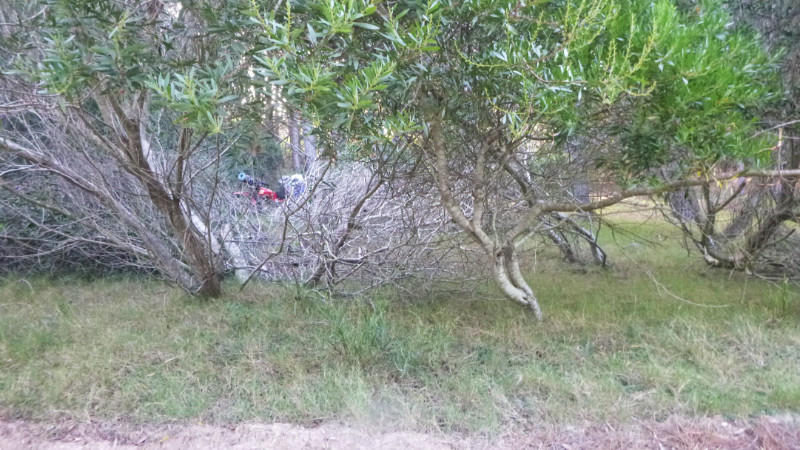
30km further on. Late afternoon, a sign for a beach down a sandy track looked worth checking out. San Antonio. It looked anonymous enough. Between small villages, the scenery was rural enough to be almost barren. Dunes, fields and trees mile after mile.
I turned down the track towards the sea. Eucalyptus trees to the right, pasture to the left, warm sun on my back. A grassy trail branched off the main track before the beach. I didn’t notice at first but this was the entrance to a house, Casa Dunas de San Antonio. I quietly pitched camp behind some bushes so I was not easy to notice from the road. Across the way, a red ‘Prohibido Acampar’ sign. It seemed quiet enough here and a only a short walk to the deserted beach.
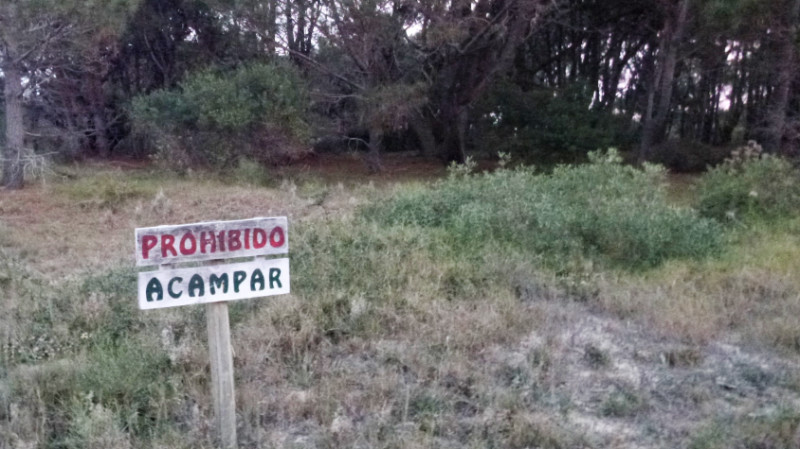
My cautiousness wasn’t necessary. I checked it out on AirBnB a few days later. It turned out the property was a holiday let. Being out of season, it was deserted. As were all the other nearby holiday homes. I saw only one car arrive, turn around and drive back the way they came. I had the place to myself. As tranquil as you can get… just me and the sound of grasshoppers and the Atlantic surf…
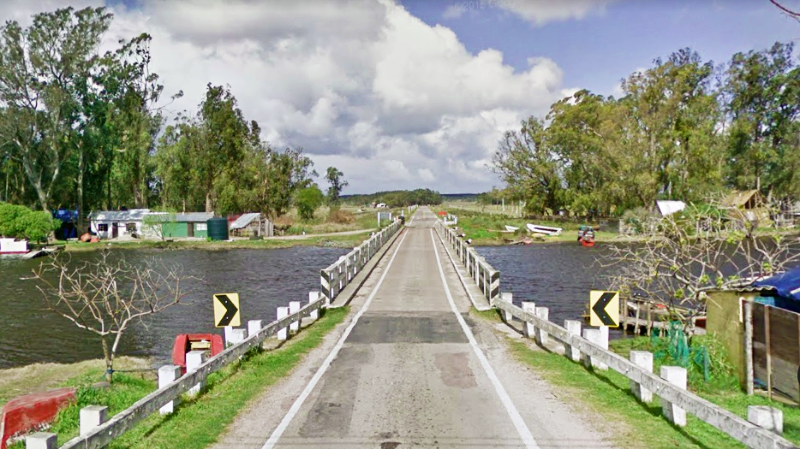
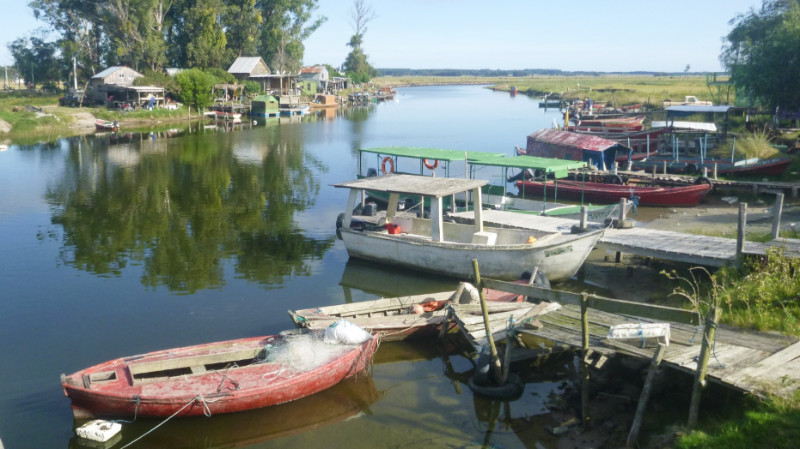
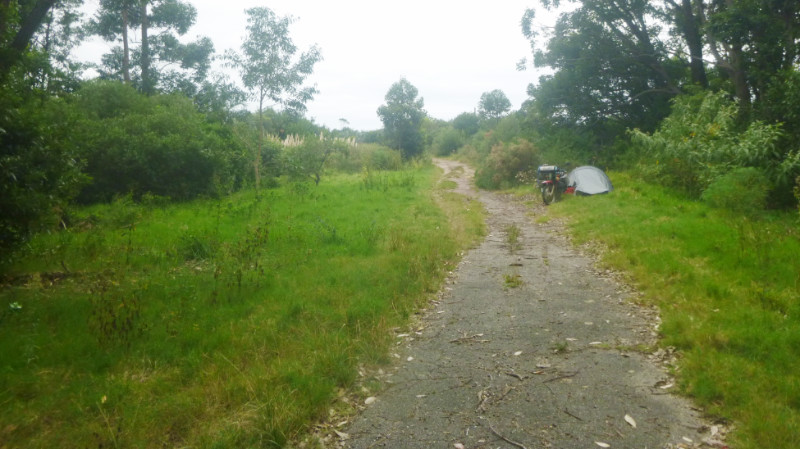
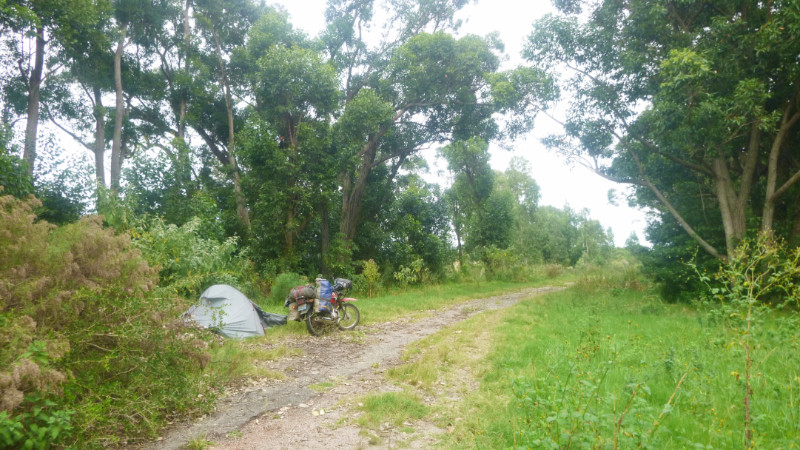
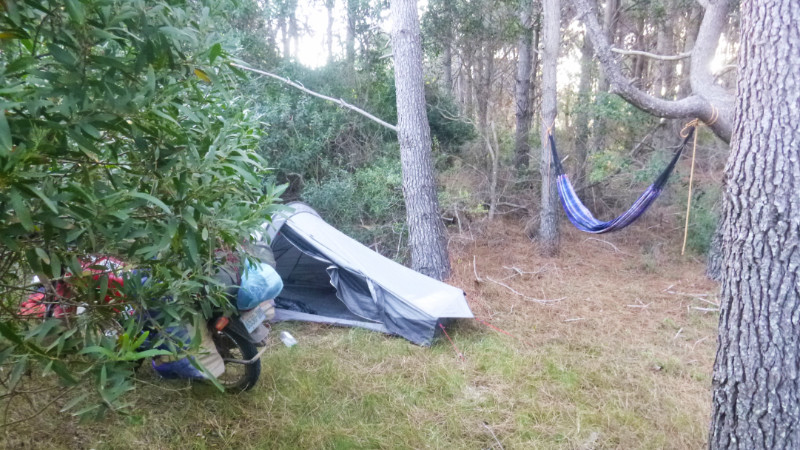




The Fortaleza de Sta Teresa has a huge area, quite nice. I’m curious about Cabo Polonio…
Apparently, you can drive to it if you have 4 wheel drive and maybe motorcycle.
It would be a good place for lockdown if I had the option 🙂